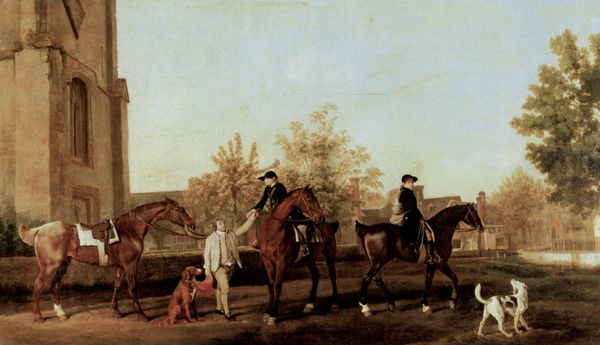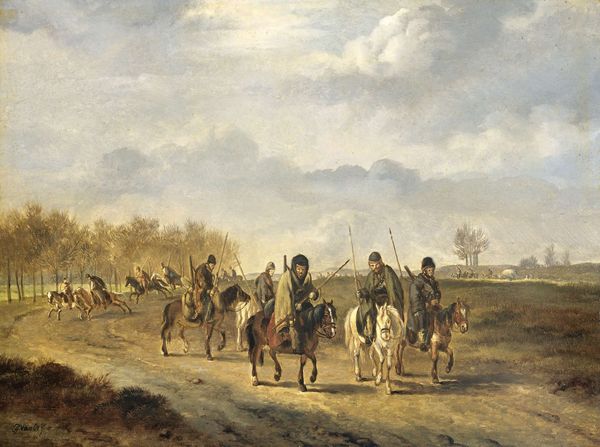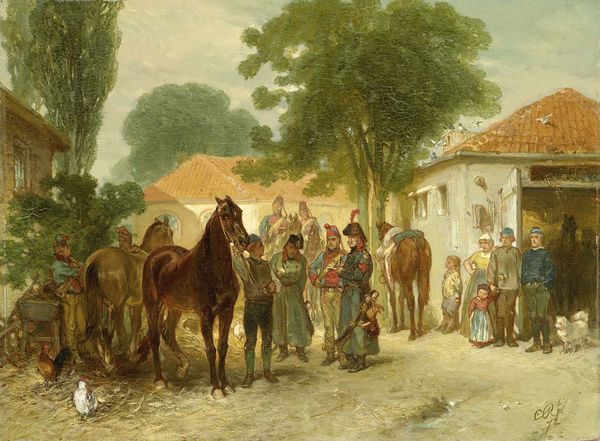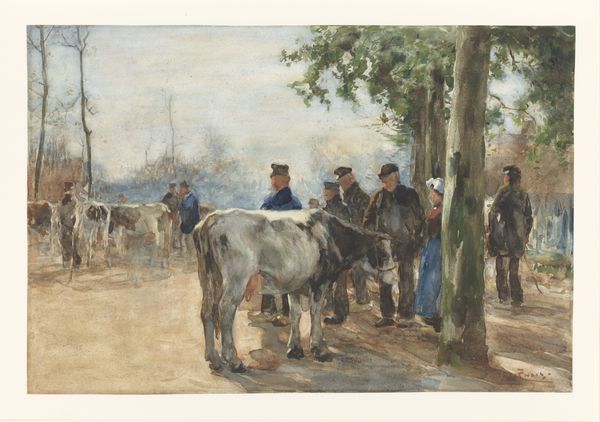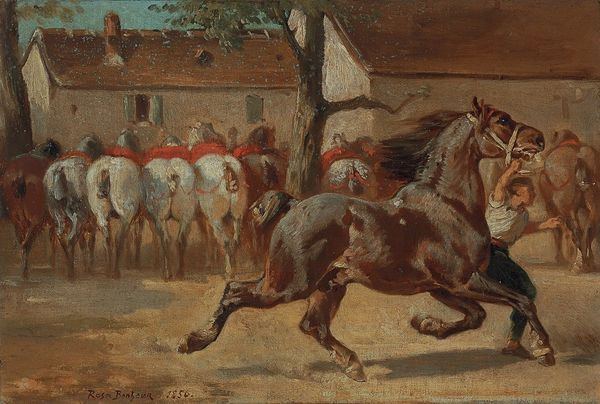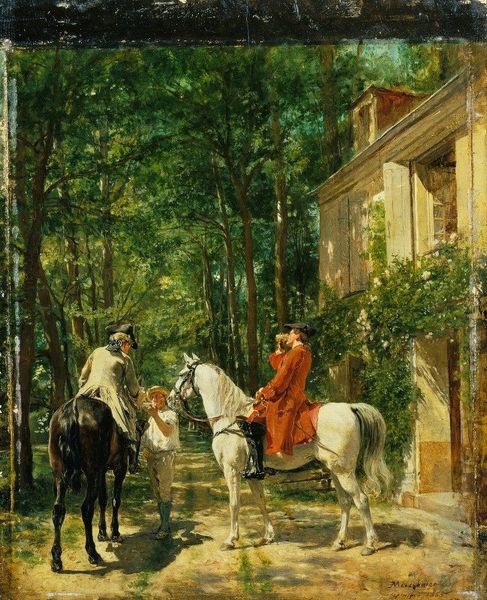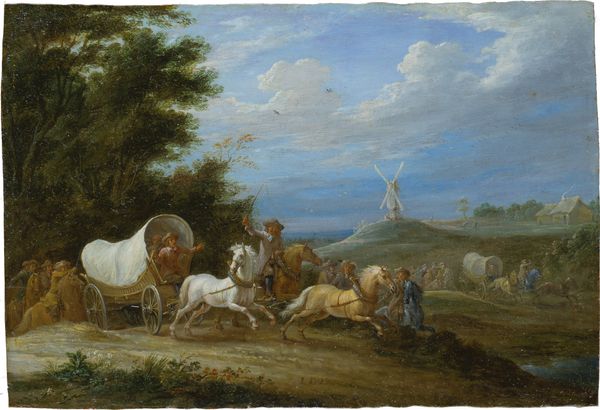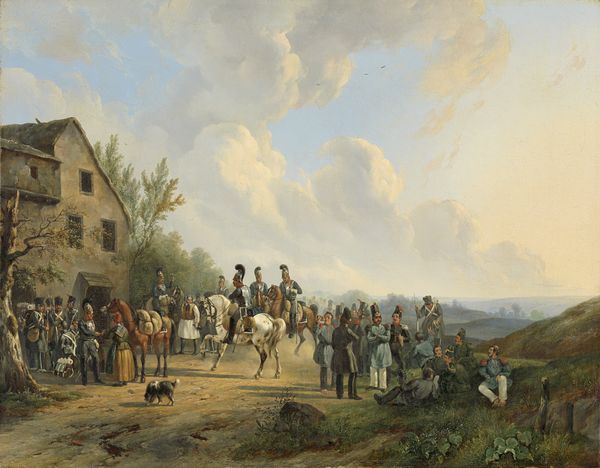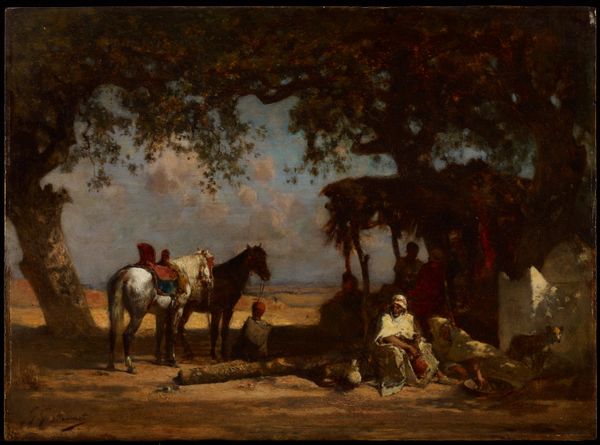
painting, plein-air
#
painting
#
plein-air
#
landscape
#
horse
#
hudson-river-school
#
genre-painting
#
realism
Dimensions: height 63.1 cm, width 97.1 cm, thickness 3.8 cm, depth 7 cm
Copyright: Rijks Museum: Open Domain
Curator: "Horse Fair on the Maliebaan at The Hague," painted by Cornelis Albertus Johannes Schermer in 1858. A Dutch landscape painting capturing a horse fair in full swing. Editor: My first thought? A sense of muted light and controlled chaos. There’s a very horizontal composition here, punctuated by these verticals—the trees acting like pillars, framing the scene. The colors are surprisingly muted, especially considering it depicts such a lively event. Curator: Muted colors often lend themselves to greater historical accuracy, mirroring how life might have felt in that era. The horse fair itself represents an intersection of economics, social gathering, and, importantly, our complex relationship with animals, especially with horses, the prominent symbol of power, freedom, and vitality, connecting deeply with our historical reliance and emotional bonds. Editor: And the arrangement! I'm noticing how the foreground almost acts as a stage—the way the figures are grouped invites our eyes to wander and discover details, almost like a dance. And what is intriguing is how the horses become almost more ‘individualized’ in detail and depiction, compared with the surrounding crowd. Is that some proto-Formalist animal liberation philosophy emerging in this work, would you say? Curator: The details do subtly highlight the individual agency of these animals— perhaps as recognition of the fact horses weren't just commodities. More generally though, you are correct; within realism, we begin to move toward ideas of psychological interiority and individual significance previously not considered so directly by landscape artists. Schermer masterfully captures the era's values. Editor: It almost creates a microcosm of society. From a purely formal perspective, look how he balances the soft, atmospheric background with the almost hyper-realistic details of the horses in the midground, though it’s a slightly abrupt transition. Perhaps some manipulation of aerial perspective there to move toward an almost flattened plain? Curator: Indeed. And thinking about it today, "Horse Fair on the Maliebaan at The Hague," serves as an interesting testament to human enterprise but simultaneously prompts reflections on how we see these creatures in society, both in the 1800s and today. Editor: I agree. It’s fascinating how Schermer weaves this narrative through color, form, and light. And, I appreciate now the complexity beneath that surface simplicity.
Comments
No comments
Be the first to comment and join the conversation on the ultimate creative platform.
